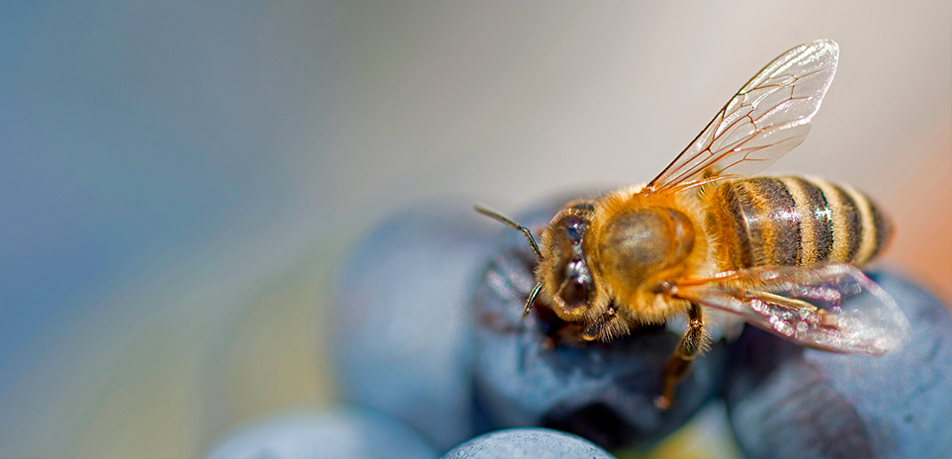VINEYARD FAUNA: THE SEARCH FOR BALANCE

We cannot separate winegrowing from nature, trying to subjugate or reduce nature’s spontaneity while focusing our efforts on increasing the vineyard’s productivity. Today we know that the best way of improving productivity is precisely the opposite: making sure the vineyard exists in harmony with the nature around it.
This is one of the cornerstones of sustainable viticulture: forging an alliance with biodiversity. It is about encouraging a harmonious relationship with wild species, a search for coexistence, especially with our allies in the biological control of grapevine pests.
[[{"fid":"20437","view_mode":"default","fields":{"format":"default","alignment":"","field_file_image_alt_text[und][0][value]":false,"field_file_image_title_text[und][0][value]":false},"type":"media","field_deltas":{"1":{"format":"default","alignment":"","field_file_image_alt_text[und][0][value]":false,"field_file_image_title_text[und][0][value]":false}},"link_text":null,"attributes":{"height":392,"width":450,"style":"height: 436px; width: 500px;","class":"media-element file-default","data-delta":"1"}}]]
A Bufo bufo specimen that lives in the Fransola vineyard. It feeds on cockroaches and butterflies.
This means that insectivorous birds, bats, amphibians, and reptiles, as well as certain insect species can become a winegrower's greatest ally. This is why we are increasingly seeing structures in and around vineyards that are designed to attract them: nesting boxes, artificial ponds, insect hotels or houses (small wall-like structures filled with slim trunks and other plant material), and others.
[[{"fid":"20438","view_mode":"default","fields":{"format":"default","alignment":"","field_file_image_alt_text[und][0][value]":false,"field_file_image_title_text[und][0][value]":false},"type":"media","field_deltas":{"2":{"format":"default","alignment":"","field_file_image_alt_text[und][0][value]":false,"field_file_image_title_text[und][0][value]":false}},"link_text":null,"attributes":{"height":617,"width":463,"style":"height: 666px; width: 500px;","class":"media-element file-default","data-delta":"2"}}]]
A colony of common bees at Milmanda (Familia Torres) vineyard. Colonies like these only stay in the same place for a few days, or even hours, and exemplify the excellent health of organic vineyards.
But not all animals drawn to the vineyards end up being our allies.
In this holistic viticultural vision, in which the vineyard merges with the surrounding nature to become yet another habitat and absorbs its essential qualities, we need to consider the damage inflicted on the natural environment—and by extension, the vineyards—by the overpopulation of certain wild mammals.
[[{"fid":"20439","view_mode":"default","fields":{"format":"default","alignment":"","field_file_image_alt_text[und][0][value]":false,"field_file_image_title_text[und][0][value]":false},"type":"media","field_deltas":{"3":{"format":"default","alignment":"","field_file_image_alt_text[und][0][value]":false,"field_file_image_title_text[und][0][value]":false}},"link_text":null,"attributes":{"height":296,"width":642,"style":"height: 231px; width: 500px;","class":"media-element file-default","data-delta":"3"}}]]
(Left) Protection against the damage caused by rabbits gnawing on young vines (during the first few years after planting) in the l'Aranyó vineyard (Purgatori Winery). (Right) A fox that lives in the vineyard and helps control the rabbit population.
One of the most common vineyard prowlers is the Mediterranean forest's ultimate opportunist: the wild boar. The boar population, along with that of two other large herbivores, the roe and red deer, is currently growing in Spain. This increase in numbers and the widespread presence of boar are largely due to a lack of predators and the gradual decline of rural life, which is problematic for the environment. Uncontrolled population growth is destabilizing the ecological equilibrium of the ecosystems that boar inhabit, as well as affecting some crops, including grapevines.
[[{"fid":"20440","view_mode":"default","fields":{"format":"default","alignment":"","field_file_image_alt_text[und][0][value]":false,"field_file_image_title_text[und][0][value]":false},"type":"media","field_deltas":{"4":{"format":"default","alignment":"","field_file_image_alt_text[und][0][value]":false,"field_file_image_title_text[und][0][value]":false}},"link_text":null,"attributes":{"height":206,"width":687,"class":"media-element file-default","data-delta":"4"}}]]
(Left) The organic vegetable garden next to the Mas Rabell vineyard (Familia Torres) provides the restaurant with fresh seasonal fruits and vegetables. (Center) The boar roaming the estate's forests frequently come to the vegetable garden and have caused serious damage to the crops. (Right) This called for a protective fence around the garden.
Sharing the same living space with these and other species whose populations are on the rise—some of which can cause significant damage to the vineyards—is difficult, but not impossible. We now have non-violent measures at our disposal to keep these wild animals away from the vineyards while respecting their existence. These measures allow us to uphold the pact of a peaceful coexistence with nature, that harmonious relationship with the environment that we alluded to earlier and which represents the foundation of all sustainable viticulture.
Ultimately, it is about caring for the Earth by caring for those that inhabit it, respecting all living creatures with whom we share our environment, whether they are allies or not. It is a constant search for the common good, or rather: protecting nature. Because, as Familia Torres's motto so succinctly states, “The more we care for the Earth, the better our wine.”
